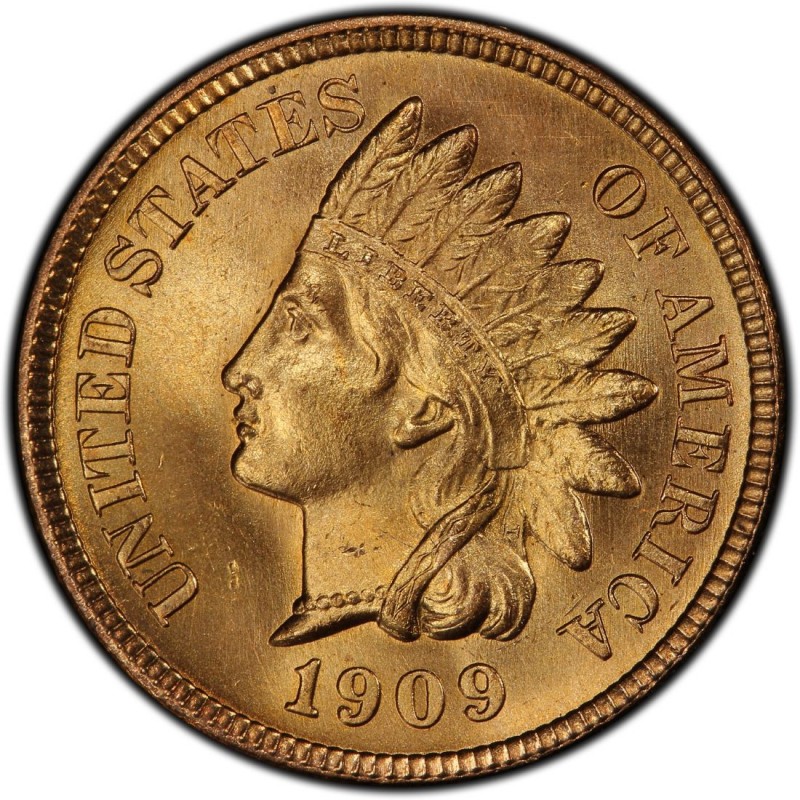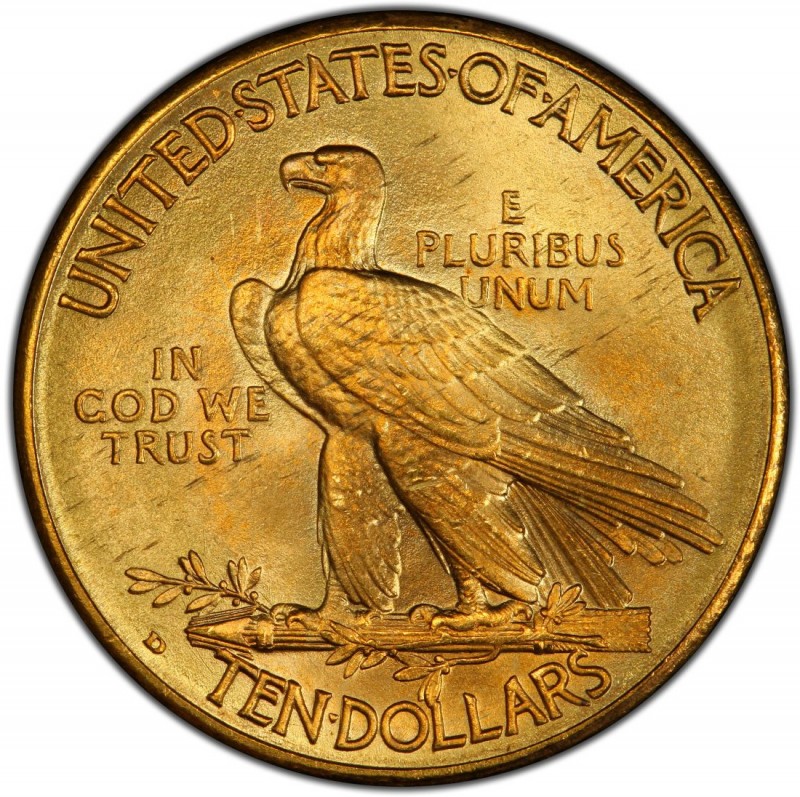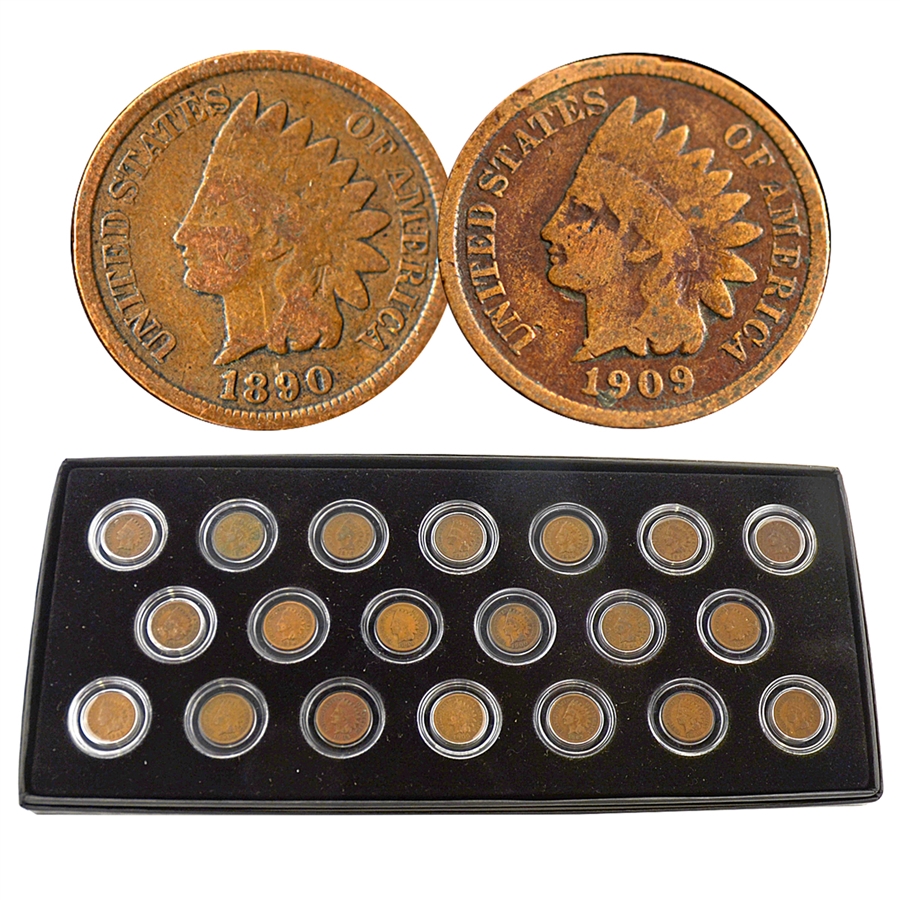1909 Indian Head Penny


1909 Indian Head Penny Error
The 1909-S Indian has a lower mintage than the 1909-S VDB cent, but for most grades sells for a lot less. This raises the question, why? Usually the coin with the lower mintage has higher market value, but not in this case.
The reasons come down to simple supply and demand.
In 1909, excitement over the new Lincoln cent created a frenzy of buying of the new coins. The short five-day period of 1909 VDB cents gobbled up all 26 million Philadelphia-minted cents. However, the much smaller San Francisco Mint issue was probably put into circulation despite its much lower mintage than its cousin issued later in the year (August 1909).
Thus the 1909-S Indian head cent was overlooked by hoarders and speculators as the new Lincoln cents were eagerly anticipated by the American public.
In the century since these two coins were released, the market value of the 1909-S Indian was often behind that of the 1909-S VDB cent — although in the 1920s, one could buy uncirculated 1909-S VDB cents for 25 cents each while 1909-S Indian cents in uncirculated condition sold for $1 and more.
By the time the first coin boards were printed in the 1930s, the empty space in most collections was the 1909-S VDB. Many fewer Indian head cent boards were made and sold, as there were far fewer collectors of that series at the time.
In fact, to date, the Lincoln cent is the most popular coin series with collectors as witnessed by the number of coin albums sold for the series by the major album makers, Dansco and Whitman.
I collected both series when I was in school in the 1930s and managed to find three of the 1909-S VDB cents and never found a 1909-S Indian head cent in change. But since I lived in Brooklyn, S-mint coins were uncommon in circulation.
I did know old-time collectors such as Bill Tracy, Charles Ruby and Ralph 'Curley' Mitchell who lived in California in the 1930s and 1940s and they found both coins in circulation in the early days.
My late friend Maurice M. Gould, who operated a coin business in Boston at that time, found none of the two coins in circulation but purchased many from collectors who either found them in change or bought them in 1909 when first released.
I visited the coin shop of the late Bob Johnson in San Francisco in 1963 when I was doing postgraduate work at nearby University of California, Berkeley, and he showed me a full roll of uncirculated 1909-S VDB cents he had recently purchased from a woman whose late husband bought them at a bank in 1909. He said he paid $1,000 for the roll. He also mentioned that he never bought a roll of 1909-S Indian head cents, although single coins showed up fairly often from customers who found them in change.
Over the decades, the aura of the 1909-S VDB cent has grown to the point where choice uncirculated coins are bringing over $10,000 at auction. Uncirculated 1909-S Indians still bring less, although actual population numbers are much lower.
In the July 2009 price list of California-based L&C Coins, one of the largest retailers of U.S. coins, the following were listed for sale:
Two 1909S Indian head cents, one graded PCGS VF-30 at $850 and one graded NGC VF-25 at $825. In the same price list were eleven 1909-S VDB cents ranging from a PCGS VF-20 for $1,500 to an NGC MS-65BN for $3,500. This illustrates that scarcity does not always equate to value. The mintage of the 1909-S Indian was 309,000, while the mintage of the 1909-S VDB Lincoln was 484,000.
There are numerous examples of rare coins bringing very different prices despite their small populations. A good example is the famed 1804 silver dollar; one recently sold for more than $2 million. There are 15 known specimens.
Going down the list of high-priced coins sold at auction, there are many coins that sold for less than half that amount even though only one or two specimens are known. This exemplifies the old economic axiom that supply and demand is the main pricing factor.

The Indian Head Penny also sometimes referred to as the Indian Head Cent by collectors is a copper coin that preceded the Wheat Penny and Lincoln Penny. Years minted 1859-1909
The front (obverse) of the coin contains the head of Lady Liberty wearing a chieftains headdress sometimes referred to as a war bonnet.
The rear (reverse) cointains a wreath and the words one cent as well as a shield on the top middle. The original 1959 release did not include the shield, but all other years do.
The face value of this coin is 1 cent. The chemical composition is 88% copper and 12% nickel from the years 1859-1864. The composition changes in 1965 95% copper, 5% tin (sometimes zinc was used in place of copper).
1909-S Indian Head Cent Penny, Avidly Pursued XF Key Date. 22 bids Ending Feb 9 at 9:07PM PST 4d 12h. 1909-S Indian Head Cent 1C Penny. After the brief 1856-1858 mintage of the Flying Eagle cent in the new small size, the Indian Head cent debuted in 1859 and was struck for half a century until 1909, when it was replaced by the Lincoln cent. The 1909 Indian Head Penny had a mintage of 14,370,645. These 1909 Indian Head Pennies are generally available in grades from Almost Good to Extra Fine. Please allow 3 to 5 business days for your order to leave our offices as each coin must be inspected and graded prior to packaging. The 1909 S Indian Head Cent (Penny) Mintmark is located under the wreath on the reverse of the coin as depicted in the example image above. This is also the rarest Indian Head Cent year/mint produced in terms of the total mintage figure. The 1909 S Indian Head Cent (Penny) Mintmark is located under the wreath on the reverse of the coin as depicted in the example image above. This is also the rarest Indian Head Cent year/mint produced in terms of the total mintage figure. Coin Value Chart: Typical Coin.

The coins are popular with those Native American heritage, and while just 2 million individuals are enrolled as members of a tribe, most people in the US today claim to be at least part Native American.
I remember fondly collecting the Indian Head Pennies and the Buffalo Nickels with my Grandmother who was 50% Cherokee. So on a personal note I love these coins, if for nothing else than their sentimental value.
1909 Indian Head Penny Mintage

As with most coins of this age the Indian Head Cent is worth many times more than it's face value indicates. Prices are well above the $10 mark for all of these coins (even in less than mint state) up until about 1879 at which time the minimum is still $1 to $3 on average. Point being..if you find one don't spend it at face value.
* Notice as of December 2006 it is illegal to melt down US Minted Pennies and Nickels, and there is a $10,000 fine to help enforce the law. It is legal however to melt down silver dollars, half dollars, dimes, quarters for their content.